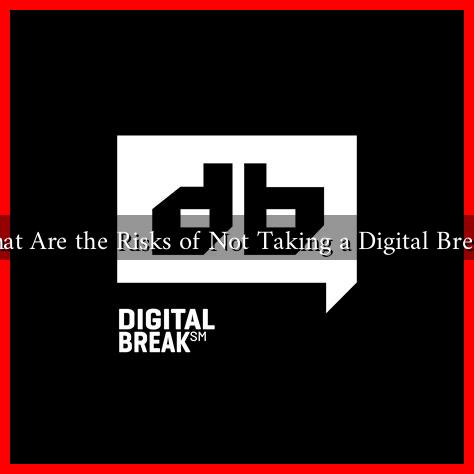-
Table of Contents
What Are the Risks of Not Taking a Digital Break?
In our hyper-connected world, the digital landscape has become an integral part of our daily lives. From social media to emails, the constant influx of information can be overwhelming. While technology offers numerous benefits, the risks associated with not taking a digital break are significant and can impact both mental and physical health. This article explores these risks and provides insights into why stepping away from screens is essential for overall well-being.
The Psychological Toll of Constant Connectivity
One of the most pressing risks of not taking a digital break is the psychological impact of constant connectivity. Studies have shown that excessive screen time can lead to various mental health issues, including:
- Anxiety: A study published in the journal Cyberpsychology, Behavior, and Social Networking found that individuals who spend more than three hours a day on social media are at a higher risk of experiencing anxiety.
- Depression: Research from the University of Pennsylvania indicated that limiting social media use to 30 minutes a day can significantly reduce feelings of loneliness and depression.
- Stress: The constant notifications and demands of digital communication can lead to chronic stress, which has been linked to various health problems.
Physical Health Risks
In addition to psychological effects, prolonged screen time can lead to several physical health issues. These include:
- Eye Strain: Known as digital eye strain or computer vision syndrome, symptoms include dryness, irritation, and difficulty focusing.
- Sleep Disruption: Exposure to blue light emitted by screens can interfere with the production of melatonin, making it harder to fall asleep. The National Sleep Foundation recommends avoiding screens at least an hour before bedtime.
- Sedentary Lifestyle: Increased screen time often correlates with decreased physical activity, leading to obesity and related health issues.
Impact on Relationships
Another significant risk of not taking a digital break is the potential damage to personal relationships. The phenomenon of “phubbing,” or snubbing someone in favor of your phone, can lead to:
- Decreased Quality Time: Constantly checking devices can detract from meaningful interactions with family and friends.
- Increased Conflict: Miscommunication and misunderstandings can arise from over-reliance on digital communication.
- Feelings of Neglect: Partners may feel undervalued or ignored when one is preoccupied with their devices.
Case Studies and Statistics
Several case studies highlight the importance of taking digital breaks. For instance, a 2018 study by the American Psychological Association found that individuals who took regular breaks from technology reported higher levels of happiness and lower levels of stress. Furthermore, a survey conducted by the Pew Research Center revealed that 54% of teens feel overwhelmed by the pressure to respond to messages immediately.
Moreover, a report from the World Health Organization (WHO) indicates that mental health issues related to excessive screen time are on the rise, particularly among younger populations. This underscores the urgent need for individuals to prioritize digital detoxes.
Strategies for Taking a Digital Break
To mitigate the risks associated with constant digital engagement, consider implementing the following strategies:
- Set Boundaries: Designate specific times during the day to unplug from devices.
- Engage in Offline Activities: Pursue hobbies that do not involve screens, such as reading, exercising, or spending time in nature.
- Practice Mindfulness: Incorporate mindfulness techniques to help reduce the urge to check devices constantly.
Conclusion
In conclusion, the risks of not taking a digital break are multifaceted, affecting mental health, physical well-being, and personal relationships. As technology continues to evolve, it is crucial to recognize the importance of stepping back and disconnecting. By implementing strategies to reduce screen time, individuals can enhance their quality of life, improve their mental health, and foster stronger relationships. Taking a digital break is not just a luxury; it is a necessity in today’s fast-paced world.

